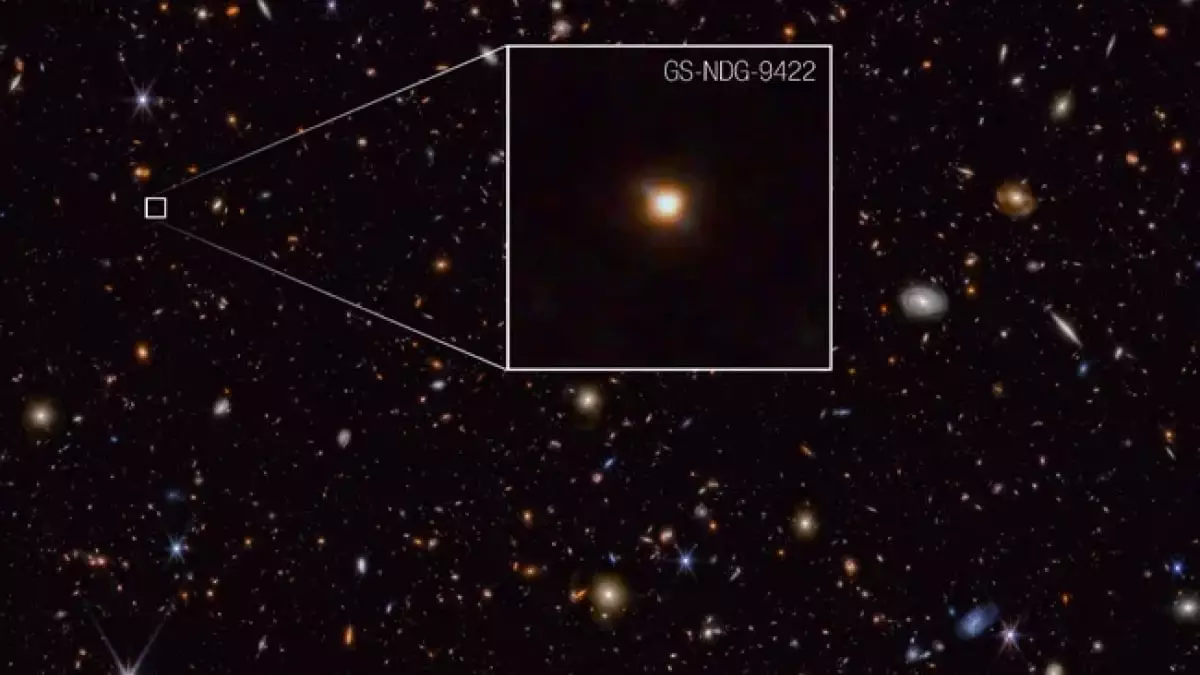The James Webb Space Telescope (JWST) has emerged as a beacon of hope in the exploration of our universe, providing insights that challenge existing paradigms of cosmic evolution. Its latest finding—a distant galaxy that dates back to about a billion years post-Big Bang—opens a window into a time when the fundamental building blocks of the cosmos were just beginning to take shape. This discovery not only enriches our understanding but also prompts further investigation into the conditions of the early universe.
This particular galaxy stands out because it occupies a unique space in the timeline of cosmic evolution. Existing between fully developed galaxies, where stars significantly outshine the surrounding gaseous clouds, and the enigmatic moments right before the Big Bang, this celestial body serves as a nexus for researchers. The characteristics of this galaxy suggest that its gas clouds emit an unexpected brightness, thereby illuminating the potential discrepancies in our current theories about early star formation.
The Dominance of Gas over Stars
One of the most captivating revelations from this discovery is the unusual luminosity of the gas clouds that dominate the galaxy’s light profile. The conventional wisdom posits that stars, primarily composed of hydrogen and helium in their infancy, should outshine their surrounding medium. However, this galaxy presents a significant deviation, raising critical questions about the environmental influences that shaped early stars. The surprising brightness of the gas may suggest that conditions in the universe shortly after the Big Bang were more complex than previously understood, warranting a re-evaluation of the factors influencing star formation during this formative epoch.
Hot Stars and Heavy Elements
Intriguingly, the galaxy also contains stars that are considerably hotter than those typically found in more contemporary galaxies. This elevated temperature is accompanied by the presence of heavier elements, a marked difference from the initial stars that were primarily formed from light elements. The existence of these hotter stars could illuminate how the composition of the universe transitioned over time. They represent a pivotal phase in the journey from primordial cosmic matter to the intricate structures we observe in modern astronomical landscapes.
With the exceptional capabilities of the James Webb Space Telescope, scientists are poised to delve deeper into the universe’s history than ever before. This particular galaxy serves as a compelling case study among many others anticipated from JWST’s mission. As astronomers scrutinize more galaxies from this early period, they stand to gain valuable insights into the evolution of stars and galaxies, helping to construct a more nuanced narrative of our universe’s formative years.
The James Webb Space Telescope’s ongoing explorations are pivotal not only in refining our understanding of cosmic evolution but also in rewriting the story of the universe itself. The discoveries await us remain vast and promising, as researchers continue to unlock the secrets of galaxies formed in the chaotic aftermath of the Big Bang. Each finding edges us closer to grasping the intricate tapestry that constitutes our universe and underscores the importance of continued investment in space exploration technologies.


Leave a Reply